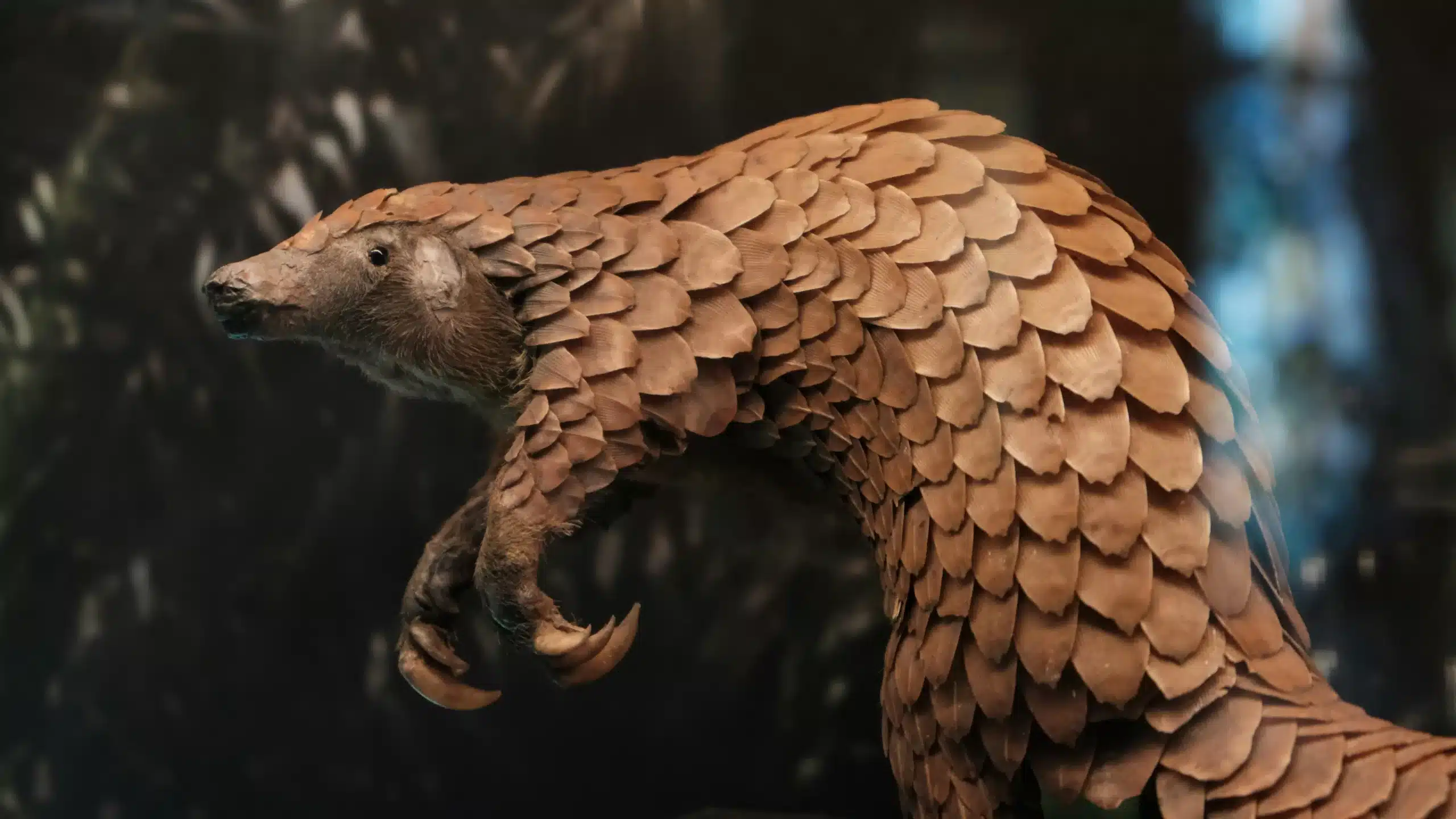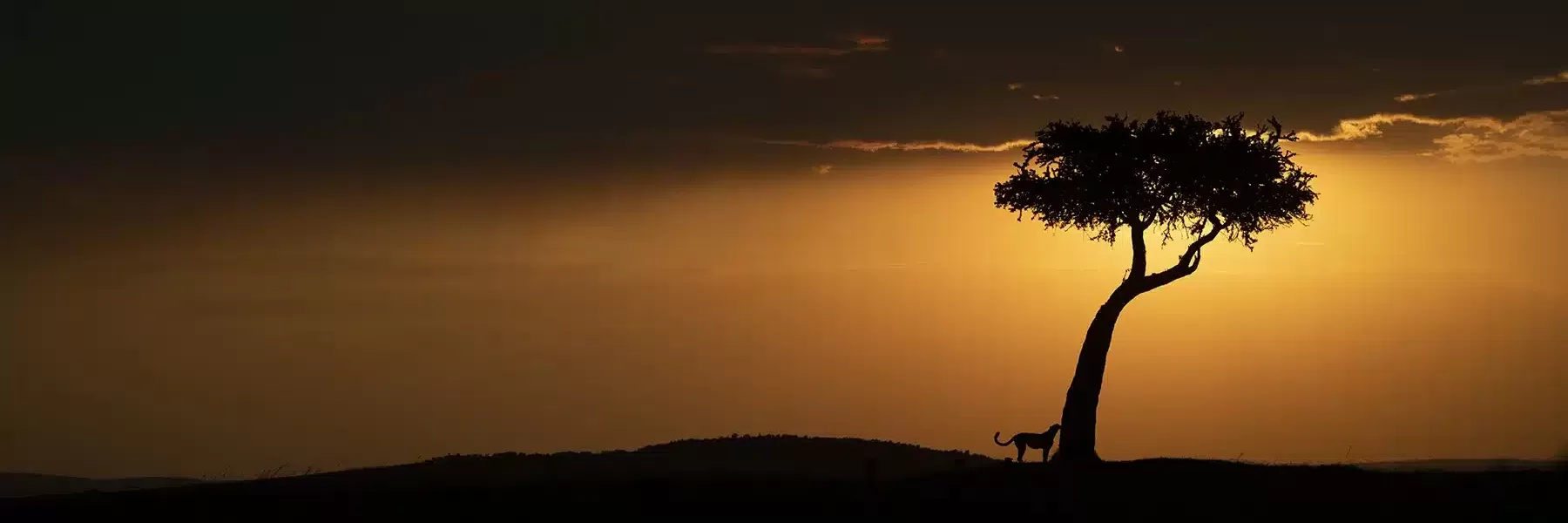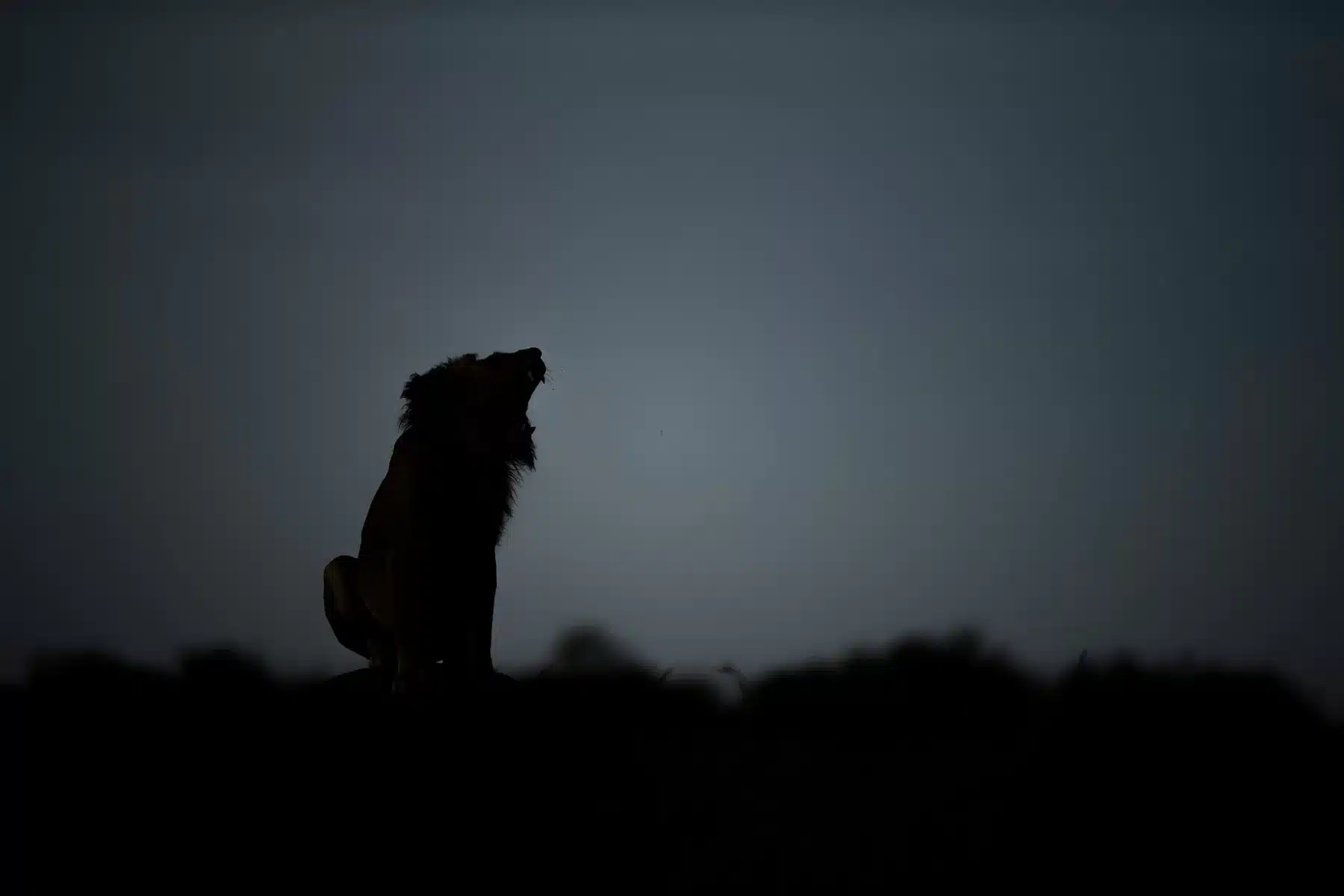Have you ever wondered what tales the night whispers in the iconic Masai Mara? When the sun sets and the African skies turn into a canvas of twinkling stars, a whole new world of wildlife comes alive. Let’s explore the secrets of Masai Mara’s night-wildlife, one of the most renowned safari destinations on the planet.
Introduction to Masai Mara
Masai Mara is a gem in Kenya, which is not just famous for its amazing daytime wildlife but is also a haven for its thriving nocturnal wildlife. This national reserve is home to a plethora of species, many of which prefer to explore the plains of the Mara under the cover of darkness.
Nocturnal Wildlife’s Importance in Masai Mara
Exploring the nightlife of Masai Mara is a quite thrilling experience in any of the Masai Mara tour packages, which gives you a chance to witness the wonderful nocturnal animals.
While the daytime has its own excitement with the majesty of predators like lions on the prowl and graceful herbivores like giraffes grazing peacefully, the night reveals a different side of this ecosystem. The nocturnal wildlife plays an important role in maintaining the delicate balance of nature and understanding their behavior is essential for conserving the overall biodiversity of Masai Mara
Unique Nocturnal Species in Masai Mara
In the shadows of night, Masai Mara reveals some of its most elusive and fascinating inhabitants. From the armor-plated pangolin to the stealthy caracal, nocturnal wonders are waiting to be discovered. Let’s delve deeper into the realm of these nocturnal wonders. Here are some of the animals that make the night come alive in Masai Mara:
Pangolin
The pangolin is a unique and highly sought-after nocturnal species in Masai Mara. Covered in tough, overlapping scales made of keratin, pangolins have a distinctive appearance that sets them apart from other mammals. Despite their strong protective covering, pangolins are shy and elusive creatures, preferring to roll into a tight ball when threatened. Their diet consists mainly of ants and termites, which they capture using their long, sticky tongues.

Unfortunately, pangolins are also one of the most trafficked mammals in the world, prized for their scales in traditional medicine and as a delicacy in some cultures. Conservation efforts are underway to protect these endangered creatures and combat illegal trafficking.
Caracal
The caracal is a sleek and agile predator that roams the savannah under the cover of darkness. With its distinctive tufted ears and long legs, the caracal is well-adapted for hunting small mammals and birds. Known for its remarkable leaping ability, the caracal can catch prey with impressive aim, making it a powerful hunter at night. Despite its stealthy nature, habitat loss and human encroachment pose significant threats to caracal populations in Masai Mara. Conservation efforts are essential to protect these elusive felines and ensure their survival in the wild.
Aardvark
The aardvark is a very mysterious animal found in Africa. It’s shy and only comes out at night. They are little diggers with long noses and strong claws. They come out at night and live in Africa. They eat bugs like ants and termites. They don’t have much hair, and their legs are short with thick claws to help them dig. It spends its nights digging up ants and termites, like a real-life treasure hunter! Even though you might see signs of it, like its footprints or holes it digs, actually seeing one is rare and special.
Bushbaby
The bushbaby, also known as the galago, is a small, nocturnal primate with large eyes and remarkable flexibility. With its big eyes and even bigger jumps, this tiny primate is the ultimate acrobat of the night. These acrobatic creatures feed on a variety of foods, including insects, fruits, nuts, and flowers. Bushbabies have strong back legs that let them jump high, up to 5-6 feet! They are fast climbers, and they use their long tails to help them balance. They eat seeds, nuts, fruits, flowers, and bugs.
African Civet
The African civet is a nocturnal omnivore. It has a distinctive black-and-white coat and a musky scent. With its sharp claws and good senses, it’s great at finding food while it’s dark outside. Even though civets usually like to be alone, sometimes they hang out in small families and talk to each other using sounds and smells. But these cool critters are in trouble because they’re losing their homes, and some people hunt them for their smelly glands. Conservation efforts are crucial to protecting these elusive creatures and their habitats from further degradation.
Genet
Looking for a real-life cat detective? Meet the genet, a small carnivore with a slender body, long tail, and distinctive coat pattern resembling a mix of cats and mongooses. With its agile movements and sharp claws, the genet is a skilled hunter that preys on various small animals like mice and bats, as well as insects sometimes. When they have babies, it takes about 100 days for them to be born, and usually, there are between one and five kittens in a litter.
Bat Species
As the sun sets and darkness falls, the skies of Masai Mara come alive with the fluttering wings of bats. From fruit bats with big eyes to insect-eating bats with radar-like senses, these creatures are like the superheroes of the night! They help pollinate plants, spread seeds, and keep insect populations in check.
Each of these nocturnal animals plays a unique and important role in the ecosystem of Masai Mara. The night is alive with wonder and excitement, from armored pangolins to acrobatic bushbabies. But wait! These incredible creatures are just a few. Masai Mara’s night world has more other fascinating wildlife species. So, as you go on your nocturnal adventure, keep your eyes open and be alert – because you never know what night wildlife awaits just beyond the shadows.
Night Wildlife Photography Tips
Get ready to capture the magic of night on camera! Here are some tips for night night wildlife photography that will brighten your nocturnal adventures in Masai Mara!
Techniques for Photographing Pangolins
Capturing the elusive pangolins on camera might be a dream for many photography wildlife photographers. Here are some techniques to help you snap that perfect shot:
- Researching and preparing is important. Learn about the behaviors of pangolins and their habitat before heading out.
- Be prepared for late-night photography sessions, as pangolins are primarily active at night.
- Try to make minimal disturbances as possible. Move quietly and avoid using flash photography to prevent startling the shy pangolins.
- Take advantage of a long lens. Use a telephoto lens with a long focal length to capture close-up shots even from a distance.
- Master low-light photography techniques by using a stable support for your camera.
- Pangolin sightings are rare, so of course you have to be patient because you might have to spend long hours if you want a a perfect shot.
- Priorities the well-being of the pangolin and maintain a safe distance to avoid causing stress or disturbance.
By combining these techniques with perseverance and respect for wildlife, you’ll increase your chances of capturing stunning images of these elusive creatures in the wild. So pack your camera gear and get ready for a memorable pangolin photography adventure in Masai Mara!
Capturing Caracals in Low Light
Getting great shots of caracals in low light is easier than you think! Here is what you need to do:
- Caracals are night owls, so head out during dusk or dawn when they’re most active.
- These cats are shy, so approach quietly and avoid sudden movements.
- A camera with a bright lens helps you take clear shots in dim light without a flash.
- Use a tripod to keep your camera steady and to prevent blurry photos.
- Sometimes you will need to wait for the perfect shot, so stay patient and keep your camera ready.
- Remember to keep a safe distance so you don’t scare them off.
With these tips, you’ll be snapping awesome pictures of caracals in no time!
Tips for Photographing Other Nocturnal Species
Do not forget about Masai Mara’s other fascinating night wildlife. Be it bushbabies or genets, certain tips will help you snap stunning shots of these nocturnal creatures:
- Do research on the behavior and habitat of the species you want to photograph. Understanding their habits will help you know their movements and get the perfect shot.
- Nocturnal animals are, of course, active mostly at night. So plan your photography sessions accordingly. Stay out late and get ready for the best chance of sightings.
- Nocturnal animals have keen senses, and loud noises or sudden flashes can scare them away. So avoid noises and sudden movements.
- Invest in a camera with good low-light performance and a fast lens. A tripod or monopod will help stabilize your shots in low-light conditions.
- Play around with your camera settings to find the perfect balance of exposure and creativity.
- Photography requires patience and persistence. Spend time waiting for the perfect moment to capture your shot.
- Remember to keep a safe distance from your subjects and avoid disturbing them. Use a telephoto lens to capture close-up shots without getting too close.
Yes, photographing nocturnal species can be challenging, but it is also incredibly rewarding. Experience the thrill of the chase and enjoy the adventure of capturing these elusive creatures on camera.
Night Wildlife Tours and Safaris
Get ready to experience the ultimate nocturnal adventure in Masai Mara with Wild Voyager. With our expert guides and access to prime wildlife view areas, you are in for a journey of the hidden world of night-time wildlife!
Guided Night Safaris to Spot Pangolins
Our expert guides are here to take you on the African safari in search of the elusive pangolin. These creatures may be shy but with our skilled guides, you will have the best chance of spotting them as they come under the darkness to eat ants and termites. Learn about their behaviors and the conservation efforts dedicated to protecting these endangered creatures.
Caracal Tracking Expeditions
Tracking caracals is an adventure filled with thrill. With their silhouettes and keen senses, these elusive felines are a sight to behold. Our expert trackers will provide you the insights into the behavior of caracals. It’s an opportunity to witness the wild side of Masai Mara in its purest form. If you want to read more about this nocturnal animal, check out our blog “All about Caracals”.
Nocturnal Wildlife Viewing Excursions
Experience the magic of the African night on one of our exclusive wildlife-viewing excursions. If you opt for a thrilling game drive or a serene walking safari, our knowledgeable guides will make sure you will have a front-row seat to the nocturnal spectacle unfolding before your eyes. Every moment of yours will be filled with wonder and excitement.
Specialized Night Wildlife Photography Tours
Capture the beauty of Masai Mara’s nocturnal creatures with our specialized photography tours. With our professional photographers and seasoned naturalists, your experiences will give you unique opportunities that will enhance your photography skills and capture stunning images of the African night. Learn about composition, lighting, and techniques for capturing wildlife in low-light conditions while exploring the untamed beauty of Masai Mara after dark.
Best Time for Nocturnal Wildlife Viewing
The best time for night wildlife viewing in Masai Mara varies depending on the season and weather conditions. During the dry season, crisp nights offer excellent opportunities to spot elusive creatures like pangolins and caracals. However, the wet season brings lush landscapes and unique nocturnal activity.
It’s essential to consider weather factors like moonlit nights and cloudy skies when planning your adventure. With a bit of luck and local knowledge, you can maximize your chances of encountering Masai Mara’s fascinating nocturnal inhabitants under the African moonlight. To know more about the peak times and best times, reach out to us today, our experts will assist you.
So, there you have it—a thrilling tour of Masai Mara’s night wildlife! From pangolins to ninja-like caracals, the savannah comes alive with wonder and excitement when the sun sets. No matter if you are on a guided night safari, honing your photography skills, or simply soaking in the magic of the night, one thing’s for sure – the adventure never ends in Masai Mara!
What are you waiting for? Seize the moment, the night is calling, and the wild awaits. Are you ready to answer the call?












